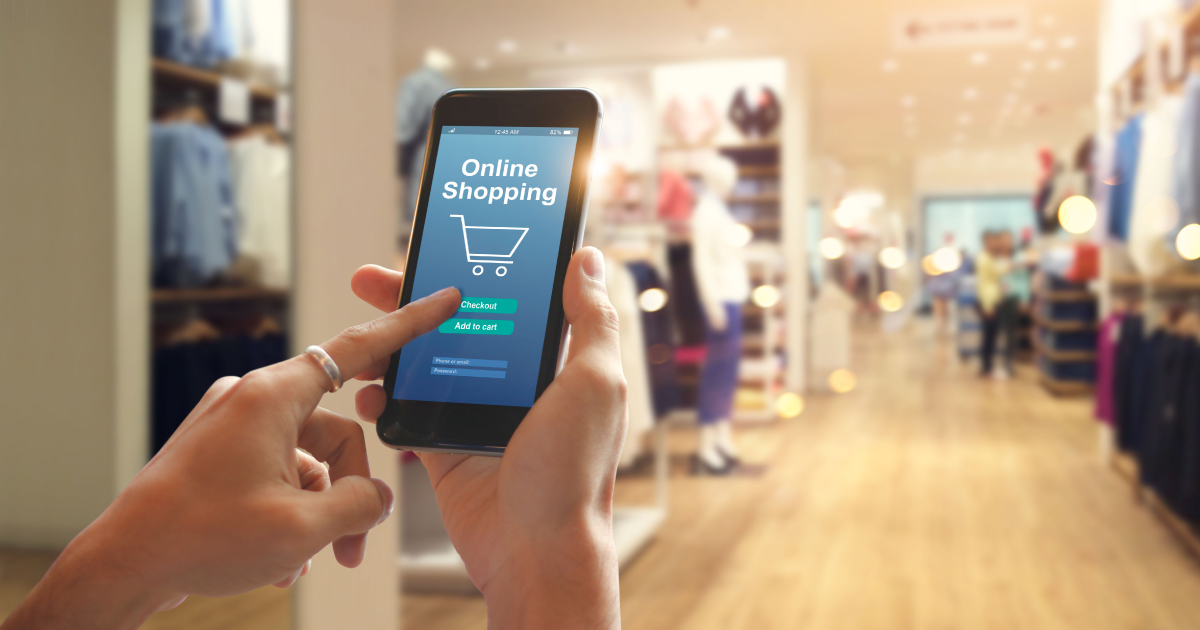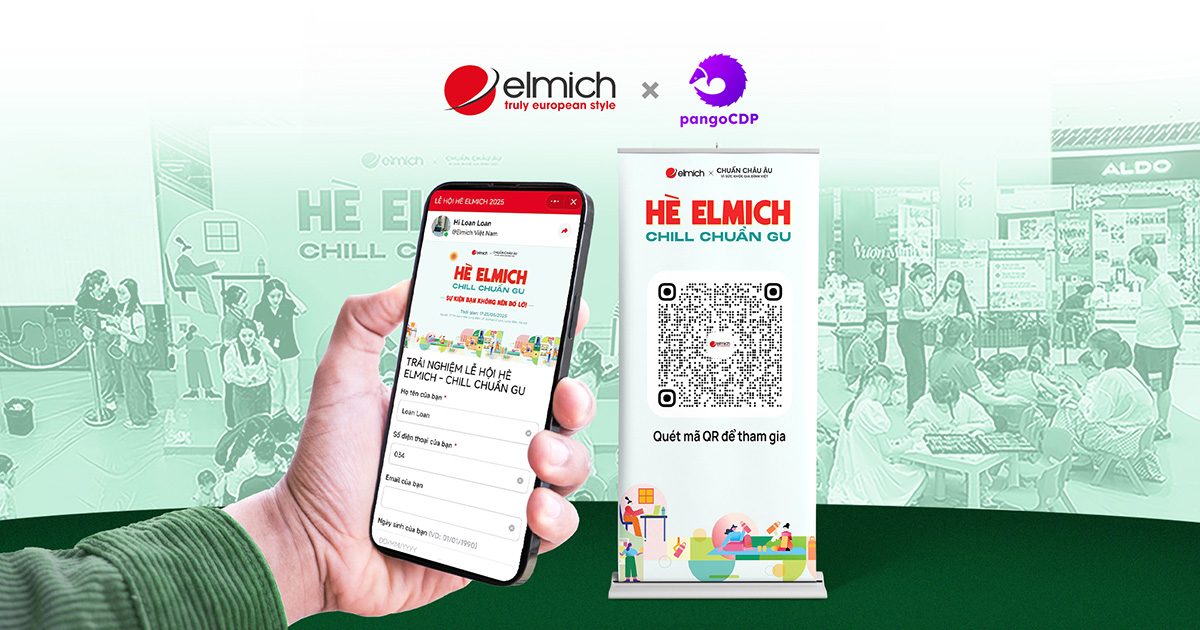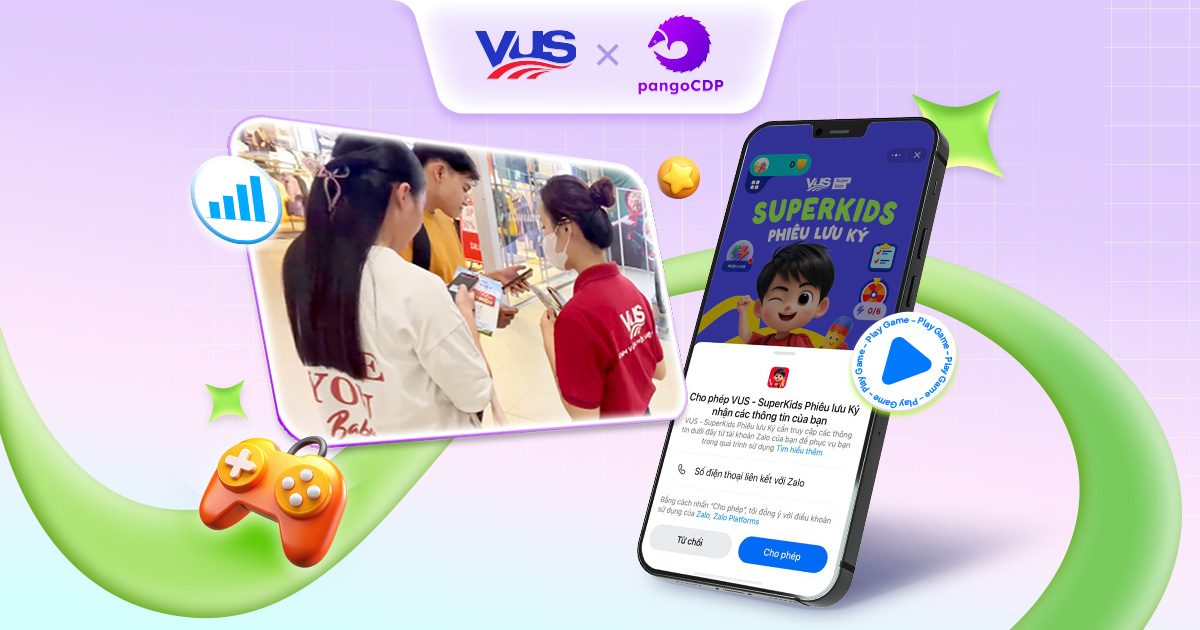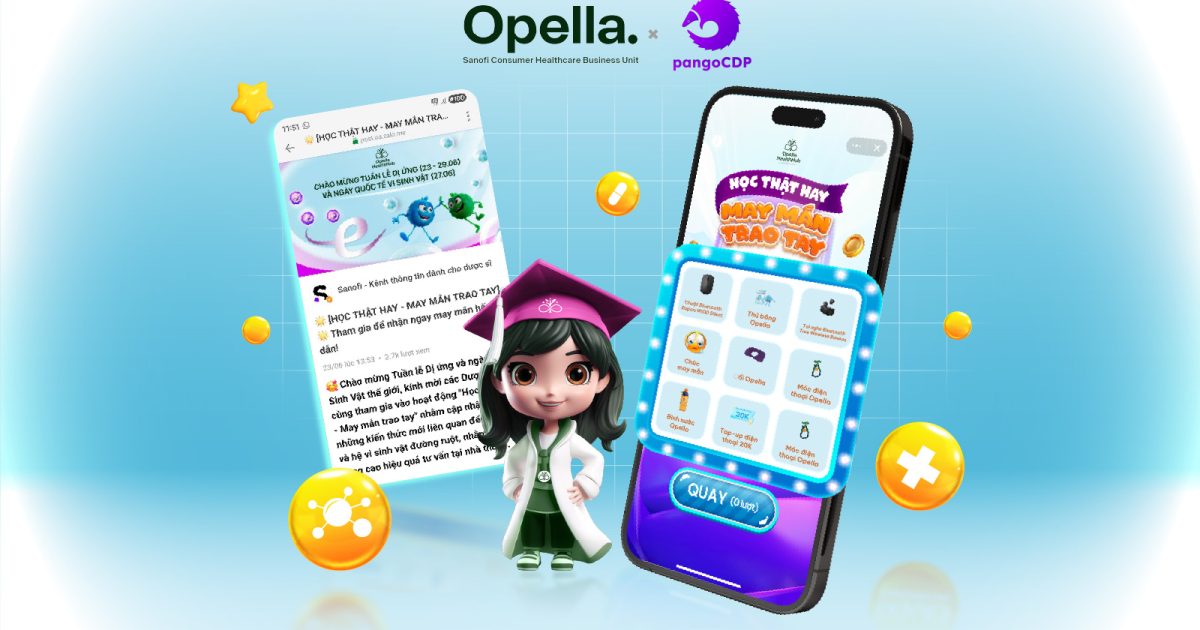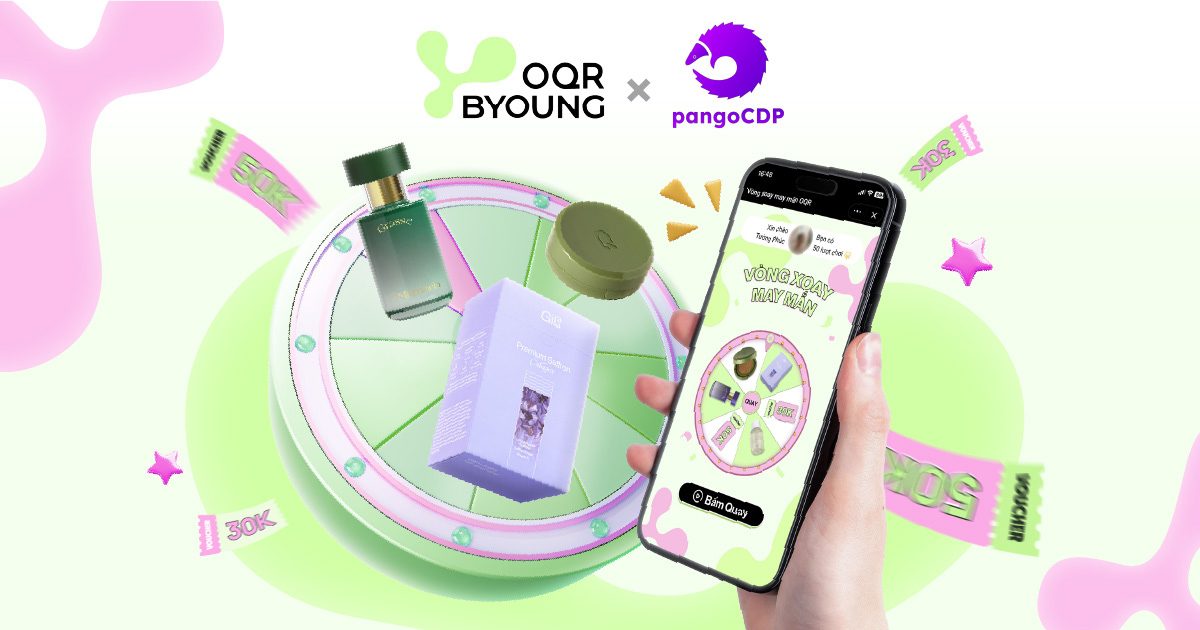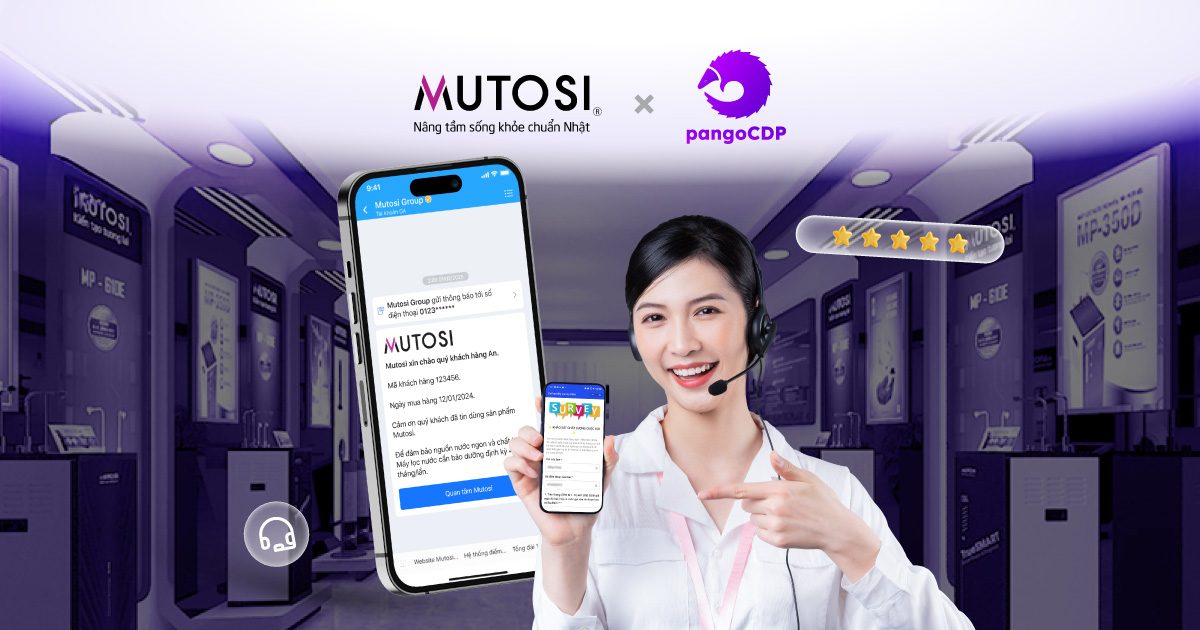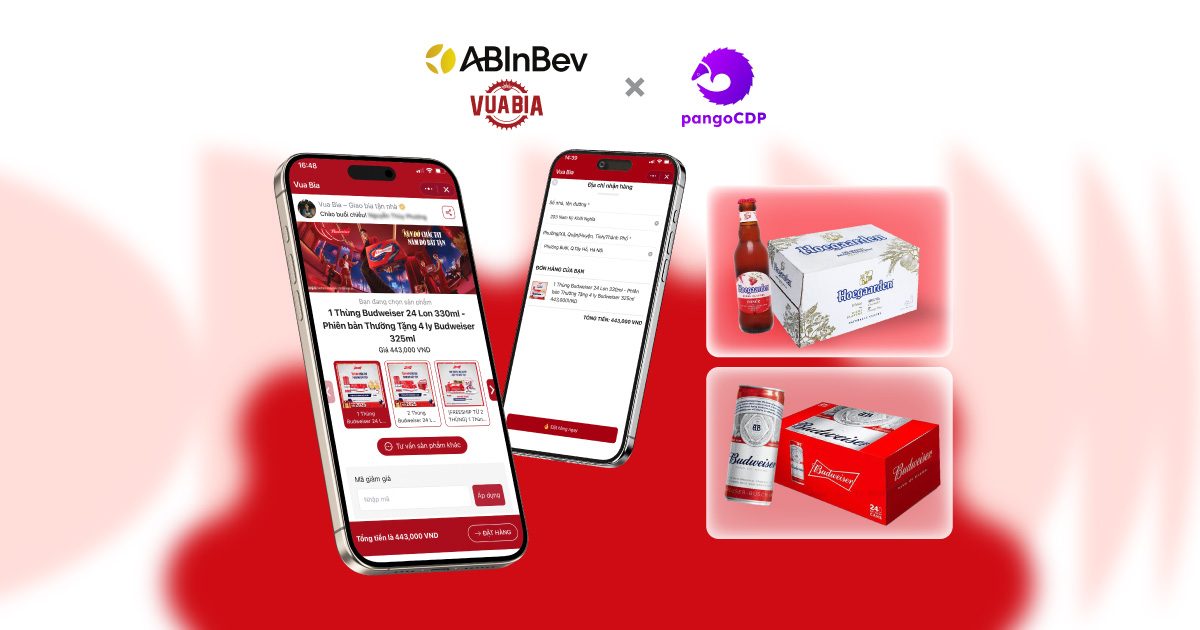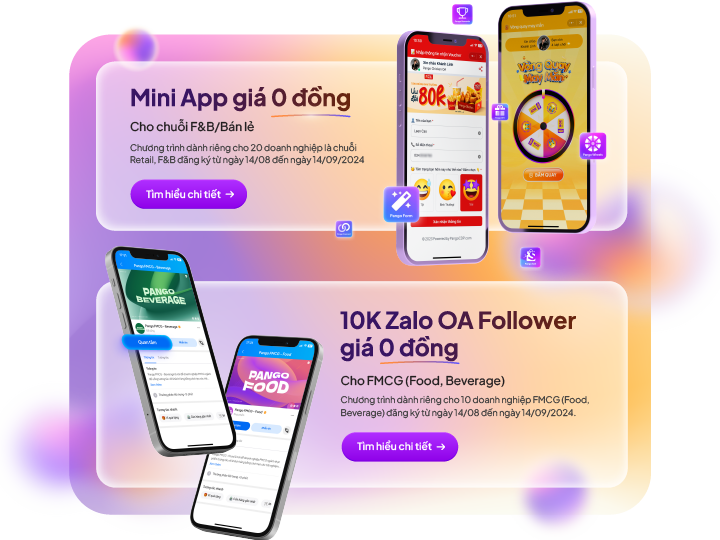Returning to the “Original” concept of O2O
O2O is a familiar concept in recent times. However, there are also a lot of confusing definitions. For example: buying online and picking up in-store (offline), getting a voucher or ticket online and using it in-store (offline) or even offline to online.
PangoCDP invites you to revisit the original concepts of “Offline Check-in” and “Online Influenced.”
“Offline Check-in”
“Offline Check-in” or “Offline Action” is defined as follows:
- Customers walk into a store, choose products, and may make a purchase afterward.
- Customers dine at a restaurant, use the Wi-Fi, and pay.
- Customers come in for consultations and use services (education, beauty, gym, spa…).
- Or simply, buying a soda at any grocery store.
“Online Influenced”
It refers to the impact of online advertisements on purchasing decisions. This could be: customers seeing banners, watching advertising videos, reading articles, or browsing products on a website.
O2O helps determine which ”Offline action” is affected by which online advertising – ”Online Influenced”: Was it YouTube or Facebook? Or did the customer just happen to walk into the store and make a purchase?
Identifying the advertisement that influenced a customer’s purchase decision provides immense value. Marketers can reallocate advertising budgets, adjust messaging, or target audiences.
Offline Check-in options
O2O involves implementing offline check-in methods, such as:
- Scanning QR codes for health declarations at stores.
- Connecting the Wi-Fi system to measure customers using Wi-Fi in-store.
- Integrating POS and CRM systems to identify customers visiting stores.
- Listening to consultations or making purchases in-store.
- Deploying QR codes on products to identify customers when they purchase and scan the QR code.
Afterward, these can be connected to the customer’s online data to provide an Online to Offline report.
Analyzing the Online to Offline conversion chain
When starting with Online to Offline solutions, business owners are often enthusiastic. They want to know which advertisements bring customers to their stores. However, the next question is, “What Next?”
This is similar to diagnosing an illness, then asking, “How do we treat it?”
Businesses expect O2O to bring more customers to their stores. Customers come back more and of course buy more… So, what should they do next?
Solution providers like PangoCDP, agencies, and even in-house marketing teams often face the question, “Can you guarantee sales?” However, this question isn’t fully addressed. Achieving final sales results requires a series of business activities, in which advertising or technology plays only a part.
To analyze the entire sales or conversion chain, businesses need to start by:
Analyzing the brand
- How long has the product been on the market?
- What communication campaigns have been done?
- How aware are customers of the product?
Analyzing distribution channels
- What is the status of the business’s distribution channels?
- Is the product available at points of sale?
- What is the number and coverage of points of sale?
Analyzing online distribution channels
- What is the monthly traffic to the business’s online store?
- What is the current conversion rate between visitors and buyers?
From there, it can be seen that the sales result is a complex formula that comes from many variables. The question ‘What Next?’ should begin by identifying the current variables and their correlations. How to find out the correlation between variables?
For example: If Facebook ad spending increases to 500 million VND per month, how much does the number of store visits increase? What percentage of this increase is due to the ad spend? Specifically, which content and audience segment contributed to this?
Once the correlation between ad spend and sales results is understood, the business’s marketing team can begin optimizing conversion rates.
Optimizing Online to Offline conversion rates
Conversion rate concept
This concept originates from e-commerce channels, where the ability to track online behavior is a strong point. Specifically: which advertising sources drive customers from? What step are they in the journey leading to purchase? etc. has made the concept of conversion rate become clearer.
Online to Offline converting steps
It begins when customers see advertisements, develop a need, and visit the website to explore. When the customer is on the website, if they find the necessary information, they will move on to the next step: contacting the business. Contact forms include: messaging, calling or leaving an email and phone number.
E-commerce
The conversion steps are mainly online without much human interaction. Users can independently evaluate, research products, and compare with similar products. This is the strength of e-commerce platforms due to their diverse product range and high investment in technology. The better the experiences are built, the higher the conversion rate will be.
Businesses with physical stores or customer service centers
Products or services requiring human consultation (education, healthcare, real estate, gym, spa…) click to lead rate, also known as the number of customers viewing the website and agreeing to contact will be the first conversion step.
“Click to lead”
How to increase conversion rates at this step?
The technology to measure conversion rates at the click-to-lead step is also quite simple. Google and Facebook have been supporting. When users on the website express interest, they leave contact information, chat, or call. All of these actions are recorded and reported by these tools.
However, optimizing the conversion rate is not easy for businesses that do not specialize in e-commerce. The desire to provide customers conversion experiences on the website similar to e-commerce sites is challenging.
PangoCDP has helped non-e-commerce businesses increase click-to-lead conversion rates. Simple built-in features will be a good starting point for these businesses.
Technology can identify highly interested customers based on website behavior, such as page views and viewing duration, and automatically “pop up” chat menus with advisors or call buttons. Moreover, web push platforms also have the ability to remind customers about the business’s products and services even after the customer has left the website.
When the customer has contacted the business, the next conversion step is that the customer agrees to visit the store or service center to experience the product or consult with experts. Factors contributing to this conversion rate include: skills of consultants, follow-up process to remind customers with the support of the system.
Technology also assists advisors by providing customer demand information. All will be ready as soon as the staff is interacting with the customer.
For businesses with large support teams and many customers, customer allocation is also crucial in increasing conversion rates. The technology system will prioritize customers needing attention based on criteria evaluating interest and potential conversion to purchases.
Most businesses are allocating customer lists quite manually, without relying on previous customer behavior assessment. Applying technology will yield higher conversion rates and more easily demonstrate effectiveness.
“Show to sign”/ “Show to buy”
The next step in the conversion chain is “Show to Sign” or “Show to Buy.” This is when customers visit the store or service center to meet product experiential consultant staff and make purchase decisions.
At this step, technology will help consultants get all the customer’s previous information, lead scoring, and even come up with the most appropriate consulting scenarios.
Finally, technology will help businesses reuse information of customers who are interested but have not yet converted (drop off). The system will automatically set up scenarios to continue providing information to drop-off customers, keeping future sales opportunities alive.
The plan to reuse the unconverted customer set will be presented in the next section.
Lead nurturing
For most businesses, the number of active customers always represents a small portion of the total contacts the business has.
The concept of “active” customers varies according to each business’s purchase characteristics. In which, “purchase frequency” is an important indicator of whether a customer remains active.
This content focuses on exploiting information from non-buying or inactive customers.
Step 1 – Customer segmentation
First, customer segmentation will be an important step in the process of nurturing customers.
Segmenting existing customers will be relatively easy because purchase information is already available. PangoCDP suggests that businesses divide customers into 10 groups according to the following criteria:
- First-time customers
- Loyal customers
- Promotion-loving customers
- Customers who like new arrivals
- Customers interested in accumulating and using points
- Customers segmented by order value
- Customers segmented by purchase frequency
- Customers who view products or add to cart but do not purchase
- Customers at risk of leaving (churn)
- Potential customers
Step 2 – Exploiting non-active customers
In this topic, we only mention customer segments #9 and #10. The remaining customer segments will be covered in different topics.
- Customers are at risk of leaving (Churn): Determined by the frequency of purchases and the latest orders. From this, strategies can be developed to reduce churn rates.
- Potential customers: This last group is not yet actual customers. They are contacts or leads interested from ad campaigns or events.
Of course, businesses all want to exploit customers who have not converted or customers who have not bought for a long time. However, there are also many shortcomings in doing so. One of the methods businesses employ, which often causes customer discomfort, is Telesales.
Many banks, insurance companies, and real estate businesses carry out relentless calling campaigns. This approach is ineffective, but creates a bad image of the business in the eyes of customers. The “brutal” and insensitive approach, without understanding customer needs, only leads to wasted costs and potentially losing customers.
PangoCDP offers a solution to help businesses tap into customer groups without the negative side effects mentioned above.
- For customer groups about to leave the business: We can completely re-analyse previous purchasing factors of customers. At the same time, combine with customer care data to determine whether customers left due to service quality issues.
- For customer groups who have not yet purchased, the number is more, but the information is less. With PangoCDP’s customer data platform solution, customer information will be recorded. Including: behaviors on the website, the level of interest in the specific product and the customer leaves (drop off) at which step in the conversion chain.
Step 3 – Establishing marketing scenarios, messages, and interaction channels
Next in the customer nurturing process is the step of establishing scenarios and messages for this customer group.
The content should not focus on sales or promotions but rather prioritize customer needs. Besides, the interaction channel with customers during this phase should be direct through email or SMS and can extend to platforms like Zalo and Viber.
Approach scenarios will be designed to measure customer interest. The scenarios should be easily adjustable to avoid spamming customers with irrelevant information.
With PangoCDP, businesses can identify and measure the level of customer interest. This is done by tracking whether customers continue to explore the information provided through links in messages. Furthermore, PangoCDP records how engaged customers are at each subsequent step.
At this time, customer segmentation continues automatically and dynamically based on the initial categorization and subsequent responses.
For customers who are not interested in the initial messages, the system will branch into new scenarios to test other content until it concludes that the effort is futile.
For those customers who show high interest, the conversion funnel restarts as previously discussed.
For customers who are highly interested but have not yet converted from click to lead, PangoCDP will help businesses optimize conversions by directly engaging through The Master Channel. This approach will yield a much higher conversion rate due to a clear understanding of this customer group’s behavior.
Conclusion
Increasing the Online to Offline conversion rate requires providing customers with the best experience.
All customer interactions must be recorded from online to offline. Moreover, easily measuring customer interactions helps marketing create optimal care scenarios for each customer group at each conversion step.
PangoCDP not only provides a platform to increase the Online to Offline conversion rate for businesses but also offers a team of advisors and implementers to support businesses throughout the process. PangoCDP will work with businesses to achieve the goal of increasing conversion rates with a justified advertising budget.
Not only data exploitation strategies, but also detailed marketing campaign implementations for businesses based on data orientation and much new knowledge around The Master Channel will be presented in detail in The Main Interaction Channel – The Master Channel, Volume 1.
Six chapters of the book will guide readers through the impressive development journey of interaction methods between businesses and customers.
From the most primitive forms to multi-dimensional interactions in the smartphone era, the book will present successful stories along with leading global brands in boosting revenue by enhancing customer experience, explaining the success of The Master Channel concept when applied at two leading Vietnamese companies, Nutifood and CellphoneS.
The book is now available at Fahasa, Phuong Nam, Hai An, Ca Chep bookstores, and online at 24h bookshops and e-commerce platforms like Tiki, Shopee, and TikTok Shop. You can also quickly order the book here: https://i.o2o.vn/H767

